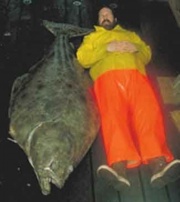Difference between revisions of "Halibut liver oil"
Jump to navigation
Jump to search
m (Text replace - "\[http:\/\/cameo\.mfa\.org\/materials\/fullrecord\.asp\?name=([^\s]+)\s(.*)\]" to "$2") |
|||
| Line 8: | Line 8: | ||
haliver oil; aceite de hgado de mero (Esp.) | haliver oil; aceite de hgado de mero (Esp.) | ||
| − | == | + | ==Physical and Chemical Properties== |
| − | Soluble in ether, ethanol, chloroform and carbon disulfide.Insoluble in water.Saponification number = 170-180 | + | * Soluble in ether, ethanol, chloroform and carbon disulfide. |
| + | * Insoluble in water. | ||
| + | * Saponification number = 170-180 | ||
| + | * Iodine number = 120-136 | ||
| + | * Density = 0.92-0.93 | ||
| − | + | ==Resources and Citations== | |
| − | |||
| − | |||
| − | |||
| − | |||
| − | |||
| − | |||
* Thomas Gregory, Thomas Gregory, ''The Condensed Chemical Dictionary'', Reinhold Publishing, New York, 3rd ed., 1942 | * Thomas Gregory, Thomas Gregory, ''The Condensed Chemical Dictionary'', Reinhold Publishing, New York, 3rd ed., 1942 | ||
Latest revision as of 12:58, 30 August 2022
Description
A yellowish oil obtained from boiling and pressing halibut livers. Halibut liver oil smells and tastes fishy, but is an important source of vitamins A and D. This nondrying oil has been used for dressing Leather. Halibuts are found in the northern Atlantic and Pacific Oceans.
Synonyms and Related Terms
haliver oil; aceite de hgado de mero (Esp.)
Physical and Chemical Properties
- Soluble in ether, ethanol, chloroform and carbon disulfide.
- Insoluble in water.
- Saponification number = 170-180
- Iodine number = 120-136
- Density = 0.92-0.93
Resources and Citations
- Thomas Gregory, Thomas Gregory, The Condensed Chemical Dictionary, Reinhold Publishing, New York, 3rd ed., 1942
- The Merck Index, Martha Windholz (ed.), Merck Research Labs, Rahway NJ, 10th edition, 1983 Comment: entry 4623
